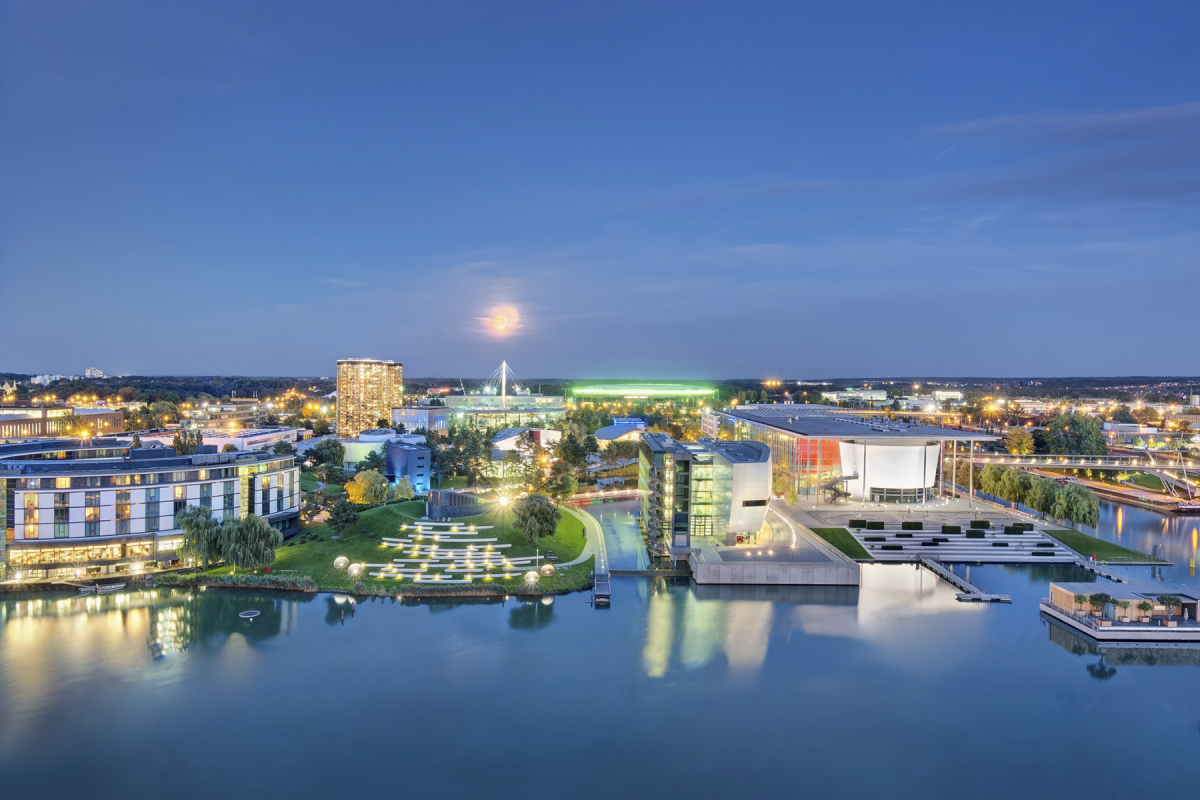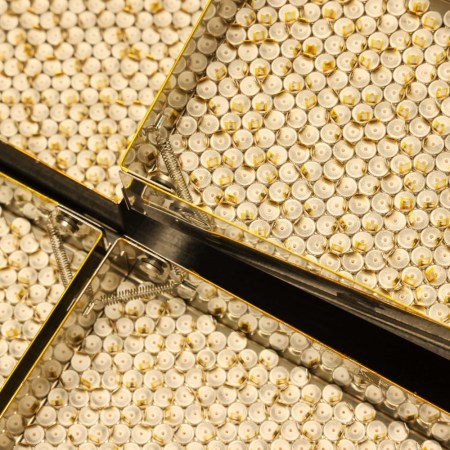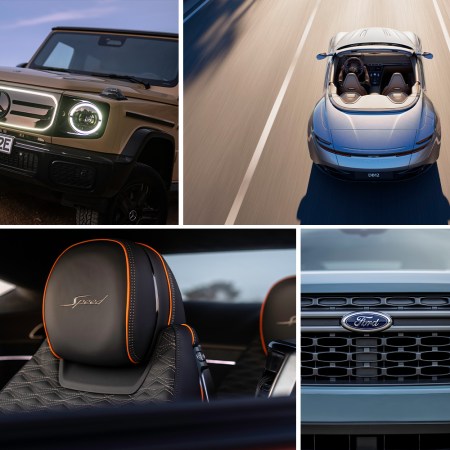If taking a vacation to a car factory does not sound sexy to you, there is a good chance you are not German. Because that’s exactly what two million Germans do every year in visiting the Autostadt (in English: car city), a customer experience center located on Volkswagen’s sprawling campus in Wolfsburg.
Before your eyes gloss over with visions of homely tourists in hard hats and safety goggles pacing a factory floor, please hear me out: I, too, doubted the majesty of the Autostadt before arriving, and I could not have been more wrong. Because the Autostadt is no mere factory — it sits adjacent one (the largest in the world, in fact, at some 70 million square feet), but it is something else entirely, a kind of gleaming, Utopian theme park for car lovers replete with museum exhibits, virtual-reality games, robot bartenders, five-star restaurants and its own Ritz-Carlton.
But before I cover the many attractions that are worth visiting at the Autostadt, let’s talk about just how the hell it got here. And that’s a story that begins with the formation of Wolfsburg itself.
The “newest” city in Germany is just 81 years old, having been founded in 1938 to house workers at a then-nascent automotive company whose flagship product was to be a two-door economy car called the Beetle. Soon after, that plan was hijacked by literally the worst person in modern history, who commanded that operations at the factory be shifted to accommodate military needs. After WWII and under British occupation, Beetle production resumed.
Today, some 125,000 people live in Wolfsburg, and 45% of them work for Volkswagen AG. According to the affable tour guide who showed me around the Autostadt, “When you meet someone in Wolfsburg, you don’t ask them what they do for work. You ask them, ‘Which division do you work in?’”
The Volkswagen factory does not only employ people who build cars; it supports a legion of stratified workers who quite literally operate an entire city, from gardeners and cooks (the factory produces 7,000 sausages a day — more than it does cars) to hunters who control invasive rodent populations and the occasional bird that wanders into the production facility.
That facility cranks out 3,500 cars a day, many of which make the journey across the picturesque Mittelland Canal to the Autostadt, where they await pickup from owners. And that’s the core function of the Autostadt, above all: while non-customers can pay to visit, the place exists to provide an exemplary level of customer service to car buyers, a process that begins at the AutoTürme, a pair of 200-foot glass silos that are best described as giant vending machines full of cars.
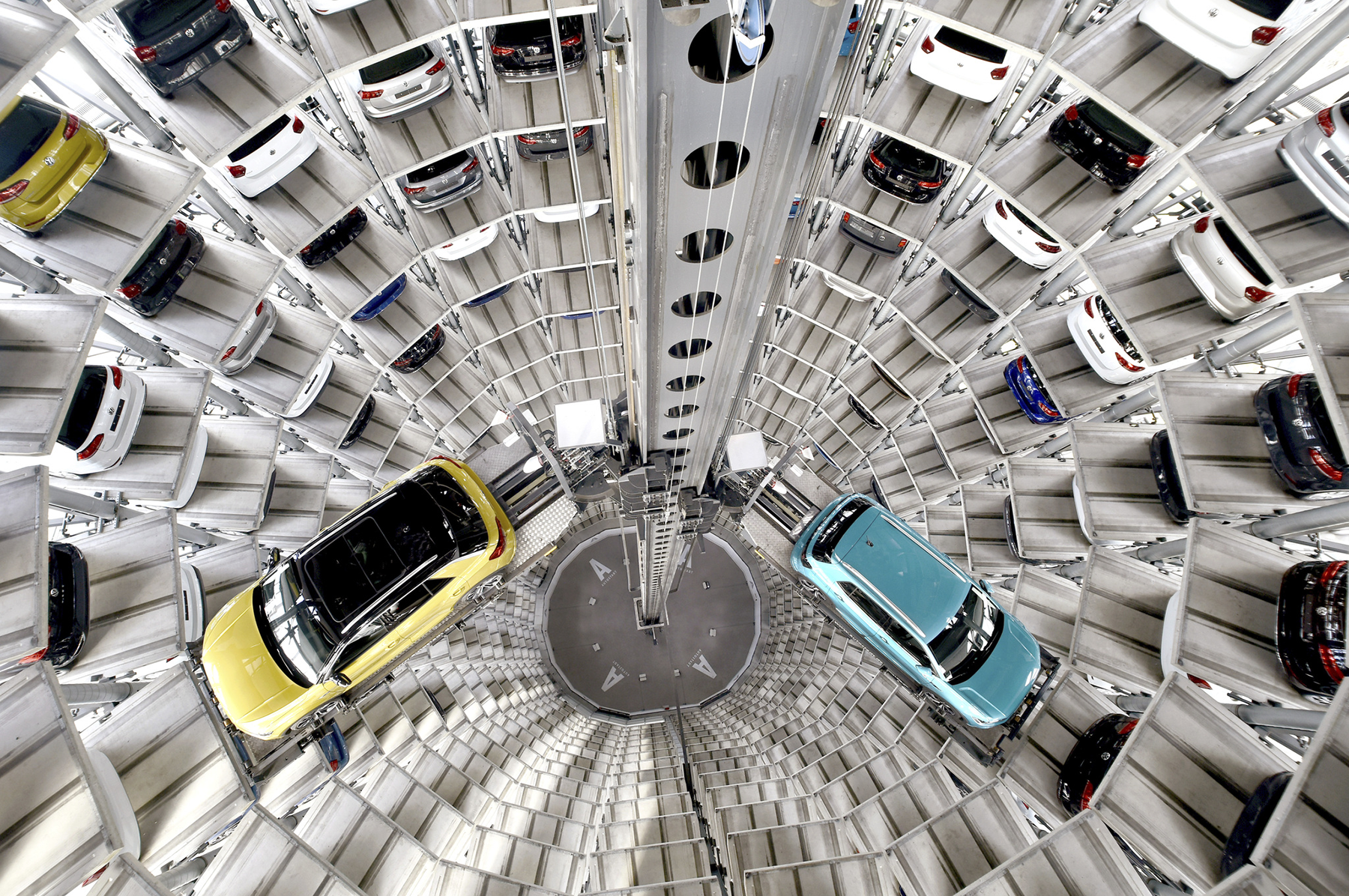
The two towers play centerpiece — both visually and functionally — to the Autostadt, and they are technical marvels. They deliver 500-600 cars per day via a high-speed elevator system that procures cars one at a time from their cells and then lowers them to ground level in an awesome whirl of mechanical efficiency. Any German customer who makes a custom VW order picks up their car in this manner — and thanks to the transport system, they do so with zero miles on the odometer. Visitors can also “ride” the elevator via an empty platform to experience the machine up close and personal.
From there, new owners are ushered to a driving center, where a VW rep gives them a hands-on driving tutorial to learn the ins and outs of their new toy. SUV buyers have the additional option of heading to a small off-roading track for a similar lesson.
But the marvels here are not merely for customers.
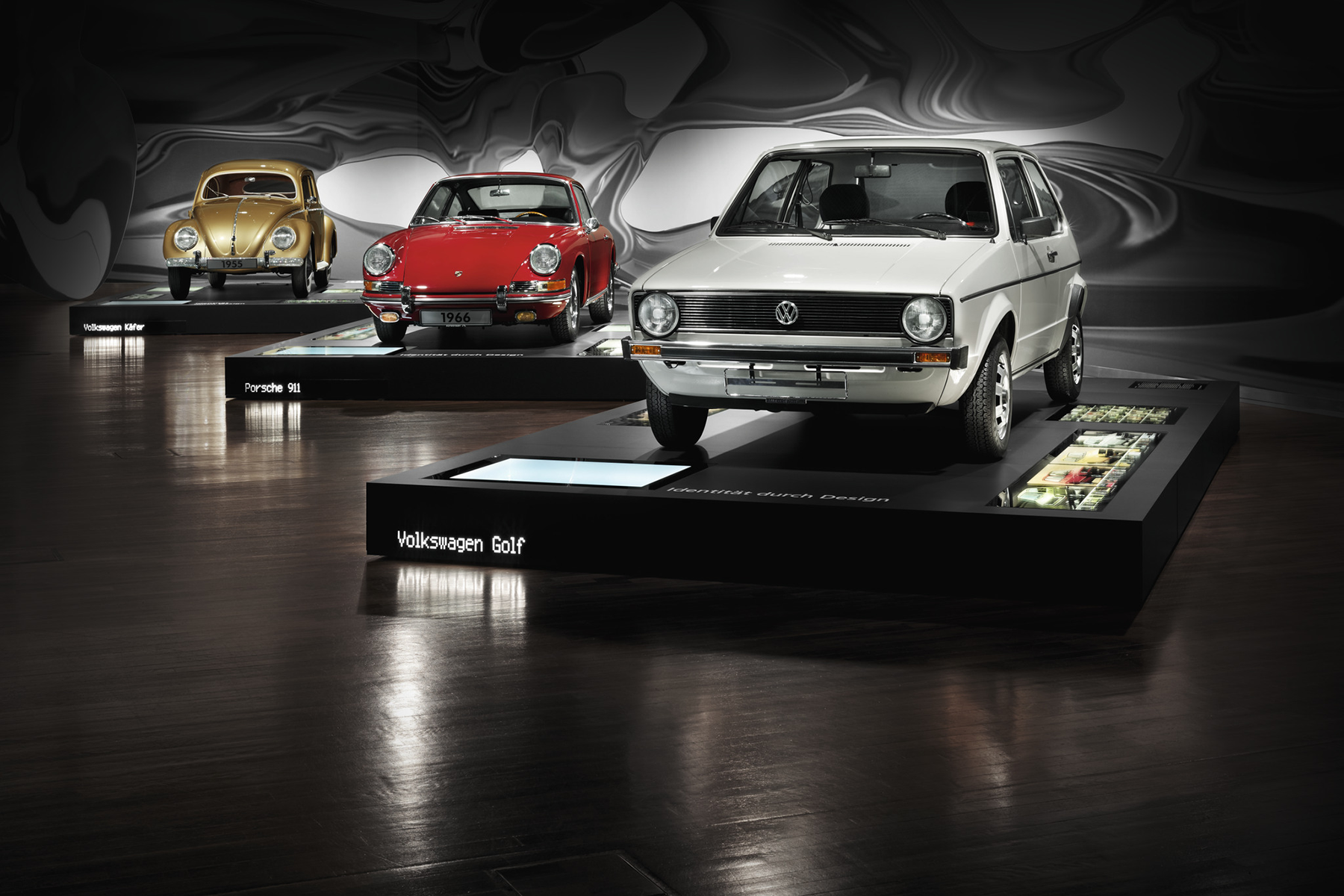
The architecture alone will be worth the trip for design nerds. Every structure has its own unique flourishes, but all come from the same school of clean, minimal, decidedly German engineering. Seven of Volkswagen AG’s brands (VW, Porsche, Audi, Bentley, Škoda, Lamborghini and SEAT) are represented in the form of “pavilions” that relay brand histories via films and installations. The most striking is that of Porsche, which sits underneath a giant brushed steel canopy based on the 356 monocoque. That canopy is not only for show: In the summer, its acoustics — along with its setting along a small, idyllic waterway — make it ideal to host concerts and performances. And in the winter, said waterway freezes over, leaving behind a seasonal ice-skating rink.
But not everything on the campus is a brand exercise. Elsewhere, you’ll find the ZeitHaus, a museum that documents the history of automaking in Germany and abroad. It houses not only a gorgeous permanent collection of noteworthy vehicles, but also state-of-the-art driving simulators, interactive exhibits, dining options and a massive indoor playground and climbing gym for kids. In the summer, the sprawling public grounds host festivals, art exhibitions and a circus. (I’d be remiss here not to mention the autonomous, vaguely cooler-shaped robots that ferry parts, license plates and miscellanea about the grounds — one staffer told me that during the summer festival season, they also deliver beer to guests who are lounging in chaises or on the beach. Yes, there is also a beach.)
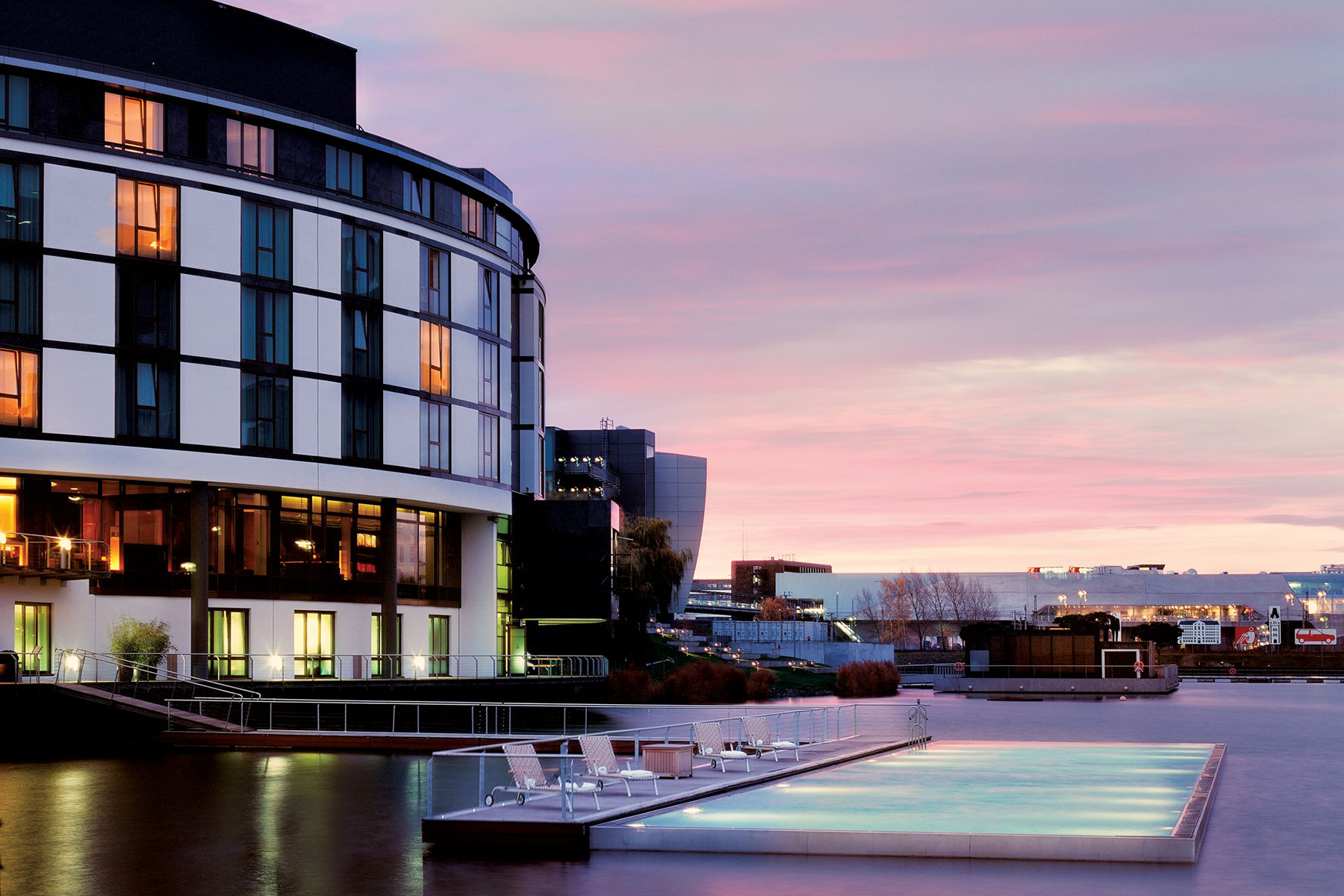
And at the end of it all, you get to retire to what must be the nicest hotel housed on corporate grounds in all of Germany, if not the entire world: the Autostadt’s very own Ritz-Carlton, complete with two restaurants (Aqua and Terra), a bar, a swanky pool and Moët-Chandon-branded foosball tables.
What does it mean? Why should you care? I suppose you shouldn’t, if cars and/or Germany’s fabled eye for modernist aesthetics aren’t your thing. Standing in the gift-shop line with a Porsche photo book (for my car-loving 65-year-old father) under one arm and a toy vintage Beetle (for my car-loving four-year-old nephew) under the other, I realized that this strange, freakishly kempt place was for them: a haven for anyone who stops to gawp at cars they pass on the street. Here they can gawp in peace, without judgment, surrounded by hundreds of other, kindred gawpers who hail from every corner of the earth. If you’re one of those people, the Autostadt may just be your nirvana.
This article was featured in the InsideHook newsletter. Sign up now.
